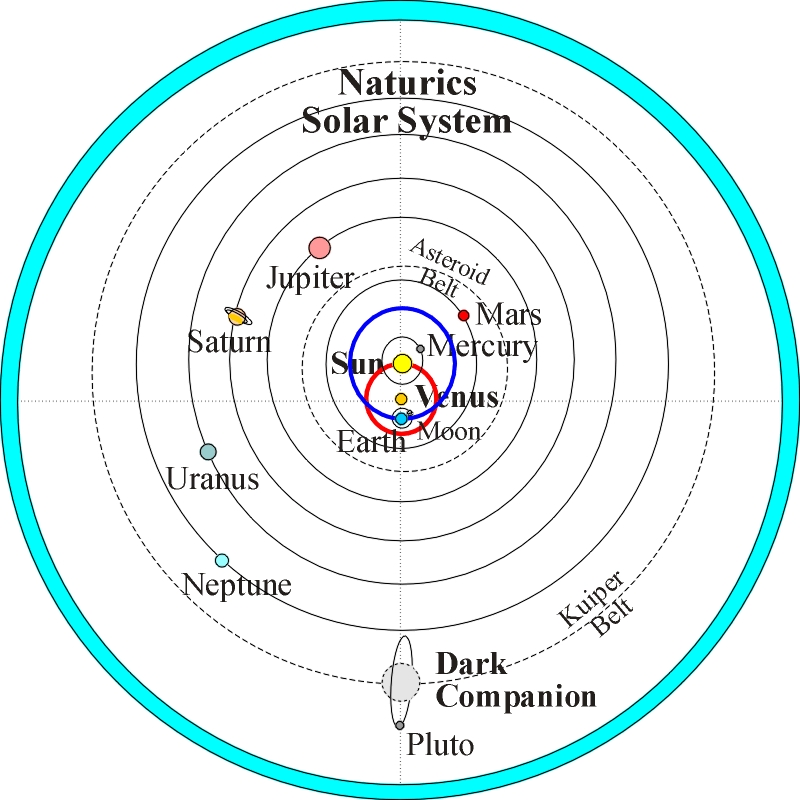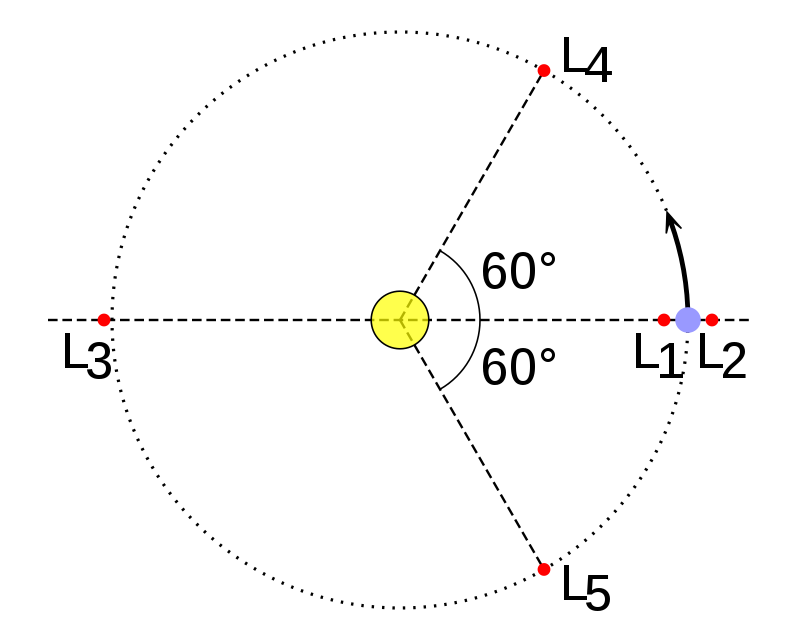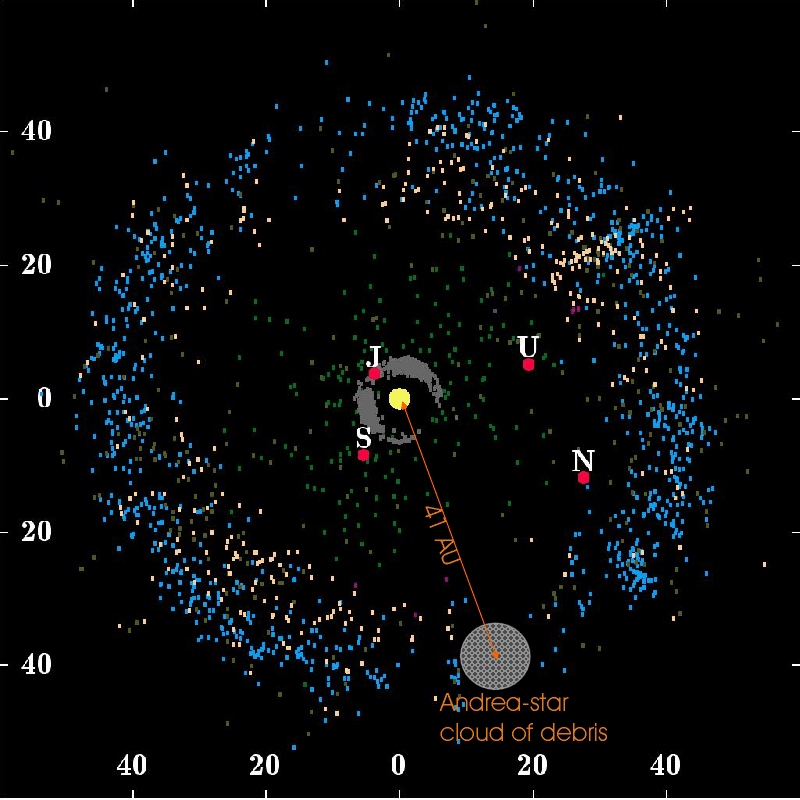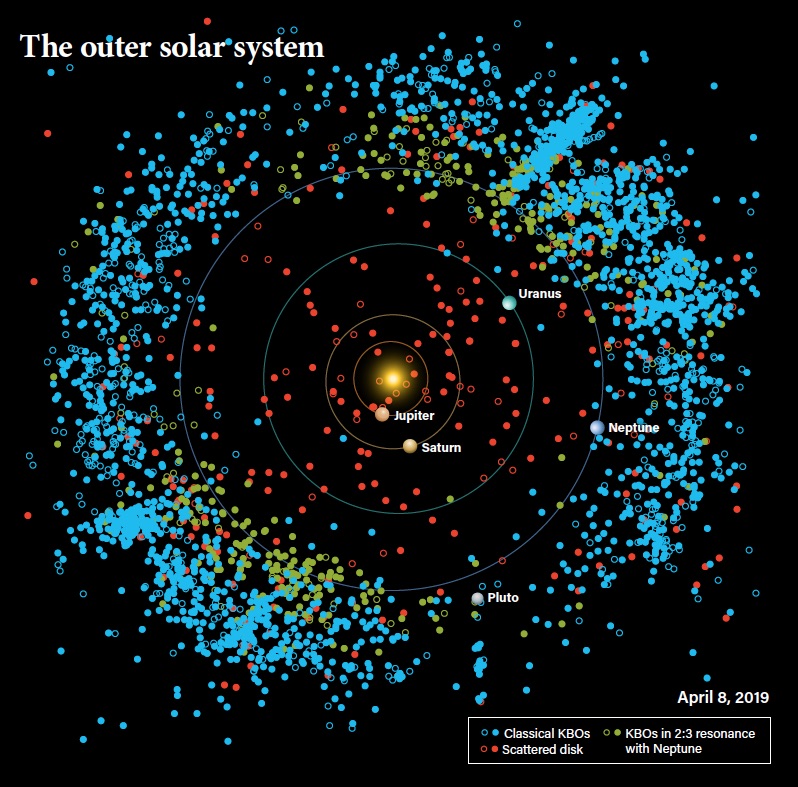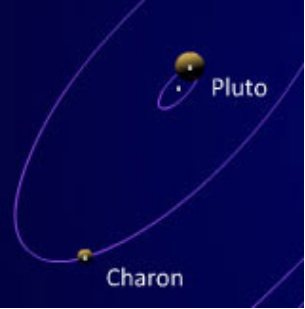A space mission of NASA's Discovery class, named "Lucy", was successfully launched on 16 October 2021. It is the first mission ever to visit, observe and, where possible, study the cosmic objects of the Trojan class. This time it's the turn of Jupiter's Trojans.
However, the interior of the Solar System is much more densely "inhabited" than the upper diagram suggests. In the next 12 years, "Lucy" will visit one asteroid of the asteroid belt (marked white here below) and seven objects of the two Trojan groups ("Trojans"; in 2027, and "Greeks"; in 2033; marked green here below).
Although there are so many more objects in our Solar System besides planets and moons, in reality we still know very little about their origin and properties. For example, on the website of the DLR Institute of Planetary Research, we read about the "Lucy" mission: "Jupiter's Trojans are considered to be relatively unmodified, primitive objects that share many properties with those of comets. Despite much scientific interest, the nature of the Trojans is not yet fully understood. Nor is the process that led to their capture on the libration points understood. ... By studying the diversity of these objects, Lucy will help to clarify fundamental questions about the formation of the solar system: What was the original state of the Solar Nebula? How did the giant planets form? What are the sources of organic material?"
These are all very fundamental questions that have yet to be answered. And their answers are important to all of us because these "additional" members of the solar system have had, and continue to have, a significant impact not only on the Earth's global climate, but also on the course of our past and future evolution.
From the new findings of our Unified Science comes our next observational proposal for observational astrophysicists. From the Venus-centred structure of the Solar System (as shown here below):
the following assertion results. Also the Sun's "Dark Companion", the fragmented mass of the former Andrea-star, which still plays a decisive dynamical role in our Solar System, has 60 degrees in front of the current position of its mass and 60 degrees behind this position, as well as at the other Lagrange points (compare the diagram below),
collected thousands of small cosmic bodies on its orbit around the centre of mass of the entire Solar System (in Venus). Although they have been following the "Dark Companion" for several billion years, we did not know of their existence until 1992, when the first so-called "Trans-Neptunian Object" was discovered. By 2015, thousands more had been discovered (in the image below, the yellow dot represents our Sun, J stands for Jupiter, S for Saturn, U for Uranus, and N for Neptune; the scattered mass of the former Andrea-star is shown as a grey cloud).
Year after year, thousands more of these objects are found.
Unfortunately, traditional science still has no idea what they are there for. Only our discovery of the prehistory of the Proto-Sun and the Andrea-star gives meaning to the existence of Kuiper's Belt. Most of the objects in this belt must be recognised as the Trojans of the Sun's "Dark Companion" mass. One should also take the opportunity to check whether the centre of the Pluto-Charon pair does not lie in Lagrange point L1.


